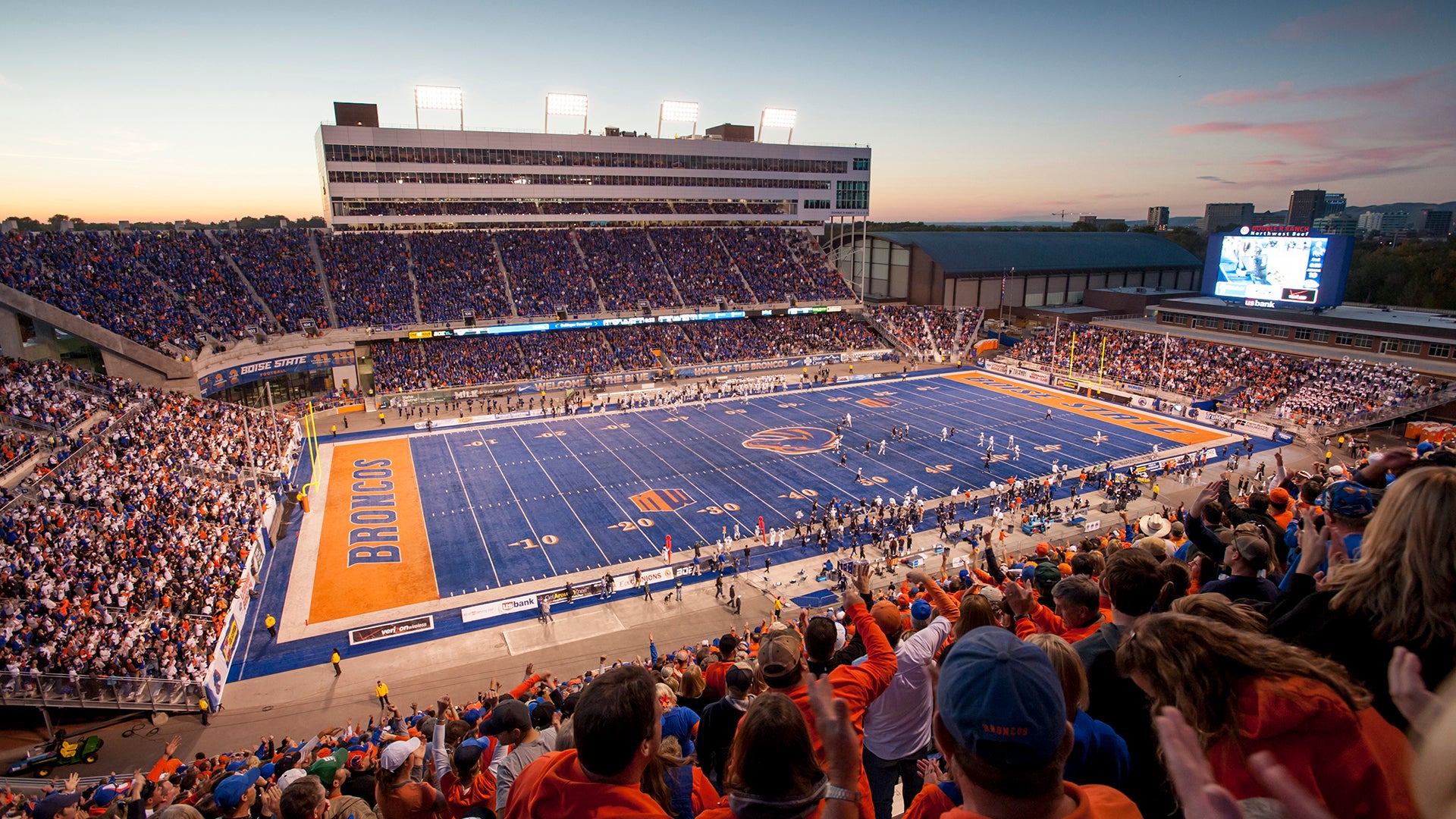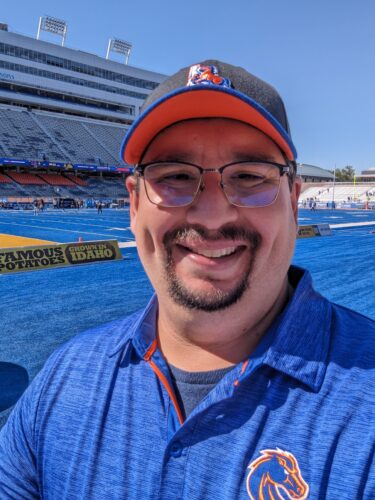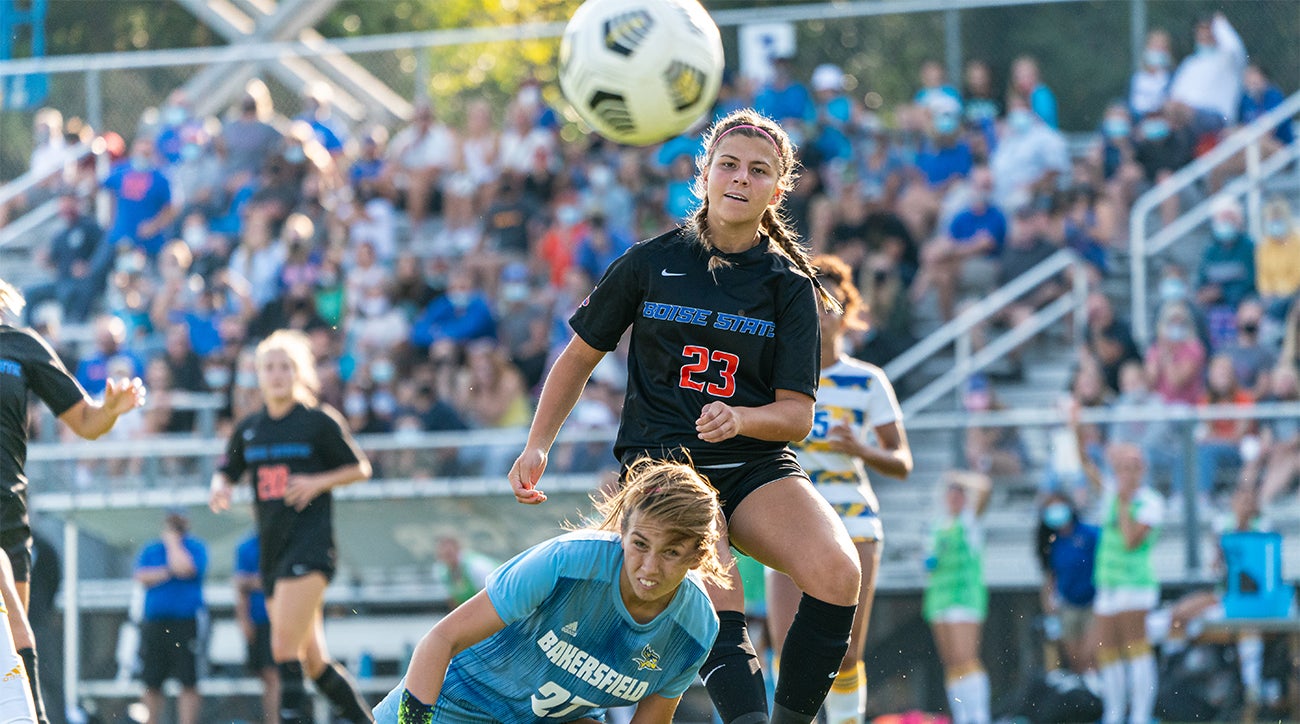
Whether a follower of college sports or not, most have probably heard a thing or two recently about N.I.L. or “name, image, likeness,” and the changing landscape of payment in college sports. N.I.L. and the associated lawsuits have created seismic shifts in college athletics. So, what happens next? Sam C. Ehrlich from Boise State’s College of Business and Economics shares an insider’s perspective.
First, some history. Since they began, college sports have been considered an amateur enterprise: college athletes play to represent their university, and their compensation for these services is in the form of academic scholarships. In the early 1900s, injuries and deaths among college football players were on the rise (in 1904 alone, there were 18 deaths and 159 serious injuries), so a regulatory organization was created to reform college athletics and protect athletes–what is now know as the NCAA. The NCAA has always strongly supported the concept of college athletes as amateurs. This categorization has historically meant that student-athletes can not be considered university employees–they won’t get paid for playing and they won’t get any of the benefits that go with employment. However, these days there’s a lot of money in college sports, and some believe that athletes should get their share.

The legal battles shaping the future of college sports
Ehrlich, assistant professor of legal studies for management in the College of Business and Economics, has a particular interest in N.I.L. and the lawsuits that have progressed through the courts in recent years. Ehrlich has a law degree and a PhD in sport management. His fascination with the intersection of law and athletics has led to notable involvement in the national dialogue around college sports, including being quoted in the New York Times and Sports Illustrated, and recently establishing The College Sports Litigation Tracker.
“The debates around college sports have really shifted. For a while, people who advocated for paying players were seen as crazy. Now it’s the opposite,” Ehrlich said. “Amateurism has been the biggest source of controversy. The NCAA really pushes it, but they’ve lost the high ground. In one case, Oklahoma football players had to donate to charity because they took a second helping of pasta at a dinner, and the school feared that the NCAA would consider that payment. In another case, a tennis player from North Carolina played in the U.S. Open but wasn’t allowed to take the prize money because the NCAA felt that violated her amateur status.”
Through a handful of lawsuits starting in the 1980s, things have started to change. Many of the cases have come before the U.S. Supreme Court and center around antitrust violations. In 1984, the Supreme Court ruled that the NCAA couldn’t exclusively handle television broadcast deals–a change that allowed colleges themselves to make significant amounts of money through broadcast deals. Another case decided that the NCAA couldn’t bar education-related payments to college athletes (for example, providing laptops or scholarships for graduate programs). Meanwhile, a number of states passed laws allowing college athletes to make money through N.I.L. deals with organizations and businesses outside their schools.
“These lawsuits are continuing to chip away at the NCAA and their amateur restrictions,” Ehrlich said. “N.I.L. is basically the right of publicity. This idea that we all have a right to profit off of our own image and likeness is not a new concept. For example, if Gatorade wanted to put my face on their bottles, I have the right to allow that and get paid for it. For a long time, college athletes couldn’t do that. But with college sports, life finds a way.”
N.I.L., collectives and the revenue-sharing revolution
Not only can businesses and organizations pay athletes through N.I.L. deals, but sports boosters have also gotten involved, creating N.I.L. collectives. The collectives are groups of donors separate from colleges and universities who pool their money and resources to facilitate N.I.L. deals. But three recent lawsuits filed by current and former college athletes against the NCAA led to a settlement that, if approved, will further transform college athlete pay starting later in 2025. The settlement mandates a revenue-sharing model between schools and their athletes that allows athletes to be paid, but deftly sidesteps the question of athletes as employees. Instead, the settlement treats athletes as independent contractors and allows them to get up to 22% of the average revenue that schools generate through things like ticket sales and media rights.
With revenue sharing in play, donors and boosters can now contribute money directly to schools instead of supporting athletes through collectives. What does this mean for donations to Boise State that aren’t directed toward athletics? Not much will change. While N.I.L. and revenue sharing allow fans and boosters to support athletes more directly, traditional philanthropic gifts to Boise State—like those for scholarships, programs, and facilities—remain as important and impactful as ever.

Navigating the new sports landscape
Last November, Boise State Athletics announced BroncoPRO, an official Boise State-affiliated group that will handle matters of N.I.L. and revenue-sharing. BroncoPRO will also work on recruiting and retaining student-athletes and providing those athletes with professional advice around N.I.L. and personal brand development. Athletes will now be required to attend financial planning lessons and seek advice from an accountant.
“We emphatically believe in our laser-focused approach in developing the best-in-class N.I.L. and revenue sharing program at Boise State,” said Cody Gougler, Boise State’s senior associate athletic director for external affairs. “Not because we need to have exactly what others have but because we believe BroncoPRO, combined with our strong culture and national brand, will fuel our ability to have a seat at the table with the nation’s best.”
Ehrlich is also helping Bronco Athletics shape BroncoPRO’s revenue sharing and N.I.L. strategy, leveraging his research on athlete fairness and N.I.L. regulations to ensure Boise State stays at the forefront of these changes.
“One thing that makes me really proud of Boise State is that our athletics department is really good at seeing the future, adapting and being nimble. While some schools aren’t willing to change the way they’re doing things, Boise State has been really good at making changes to better serve the programs and athletes,” Ehrlich said. “Now that we have the ability to pay players, it will be more equitable for athletes. They will still be students and they’ll still get scholarships, but now they will also share in the revenue they helped generate for Boise State, and I think that’s a good thing.”
Real-world lessons in the classroom
Ehrlich also noted that his interest and involvement in college sports law brings opportunities in the classroom. Through faculty research, classroom case studies and partnerships like BroncoPRO, College of Business and Economics students get a front-row seat to the business of college sports—learning from experts like Ehrlich how legal and financial decisions are shaping the future.
“I sprinkle college sports into every class I teach, covering the legal and ethical sides,” Ehrlich said. “For example, in my human resources law class, we read the Johnson decision that talks about athletes as employees. It’s a good way to showcase how broad the term ‘employee’ is, lessons around determining when someone is an employee and where that line is. It’s a good case study and students get a lot out of it.”